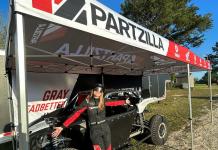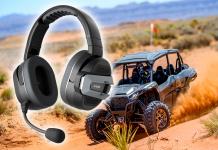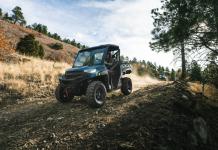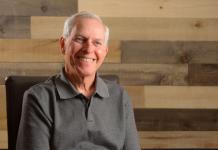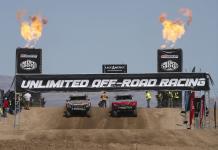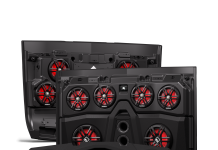When filming polar bears on the remote Norweigan island of Svalbard, for the forthcoming Netflix Original series ‘Our Planet’, the Polaris RZR Turbo was the vehicle of choice for production company, Silverback Fims.
Launched on April 5, Our Planet is the first and only landmark nature series produced as a Netflix Original and will be available to be viewed all over the globe.
Filming for the series first took place in April 2018, on the small island of Svalbard, a small Norwegian land mass situated between mainland Norway and the North Pole. Ackowledged as one of the world’s northernmost inhabited areas, Svalbard is known for unforgiving terrain and its high density of polar bears – so many that they outnumber the 2642 inhabitants of the island.
To get around the unforgiving landscape the Silverback team needed a vehicle that could hande the terrain but deliver a reliable platform to capture stunning imgery. Combining the RZR with a Cineflex gyro-stabilised camera system (usually mounted to helicopters) for the first time, gave the team a truly unique platform for the job – he £350,000 system enabling steady tracking footage to be captured, despite the rugged terrain.
Principle cameraman for Our Planet and specialist in vehicle tracking work, Jamie McPherson, commeted: “It’s so important to have trust in the vehicle and the driver as well as our ability to mount the camera system to the vehicle safely and securely. The camera system and mounts weigh around 80kg, so its key to ensure that the mounting placements are secure on a vehicle that is guaranteed to be up to the job.”
From the inside of the RZR Turbo, Jamie was able to control the camera remotely and see the footage clearly on the monitor.
“We needed to cover some huge distances, over the top of glaciers and mountains, to get to the polar bears – the RZR allowed us to travel on the snow and ice quickly and safely. Then when we got to the polar bears, we would put it into low range, allowing us to move quietly around the bears at around 3-4mph, getting us closer than we’ve ever been able to get before. This meant we could get some really intimate footage that we simply wouldn’t have been able to get with another vehicle. It was perfect for this project and easily my favourite vehicle for filming wildlife with now.”
Before having the RZR Turbo, Jamie would be travelling on a snowmobile and filming the bears from a camera on a tripod. When the bears came close, he would need to stop filming and climb back onto the snowmobile. The fully-covered and secure RZR meant that they could maintain their position and continue filming the bears.
Jason Roberts, Location Manager for the Our Planet team, added: “The Polaris allowed us to do things that we didn’t think were possible and allowed us to work in conditions in which you couldn’t usually. It’s light and quick – an important feature when the bears can reach speeds of 25mph pretty quickly. In a storm, we can simply sit inside it and see the bears on the monitor, despite not being able to see them with the naked eye. It’s great too that the RZR kept all of the electronics sheltered and warm – as well as us of course!”
Due to the unique requirements of the Silverback Films team, the RZR Turbo was customised and a number of features added to ensure that it was exactly how the team needed it. Customisations included the addition of tracks, windshield, aluminium roof, fitment of a front extreme bumper and a heavy duty jack in the back. Three mechanics from Monsen Maskin AS in Norway worked on the vehicle for two and half days to ensure that it was perfect.
Andreas Sørlie Auberg, owner of Monsen Maskin AS, said: “It’s the only RZR on the island and it was going to be used in some very challenging conditions so we wanted to ensure it was perfect for the Our Planet team. The RZR Turbo was chosen because it’s important that if something happened, the team could get away safely. It was an honour to work on.”
Customised back on the mainland in Norway and tested extensively, the RZR was then shipped to the remote island of Svalbard, where the production team fitted floatation devices in case of the vehicle falling through the ice.
Series Producer of Our Planet, Alastair Fothergill, said: “We needed a machine that was the balance between having enough power and being lightweight – with our team inside and with equipment worth nearly £1 million mounted onto and carried in it, it’s important to have faith in the vehicle you’re using and minimise any risks. We’d definitely like to continue using Polaris machinery in our projects.”
Our Planet is available now on Netflix with the polar bears featured in episode’s one and two.


